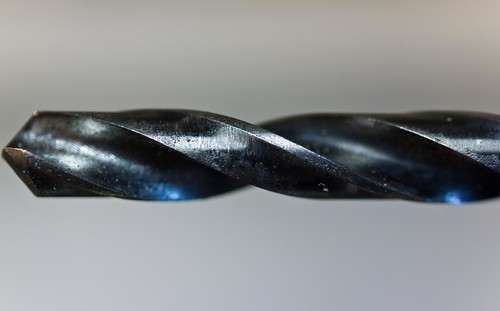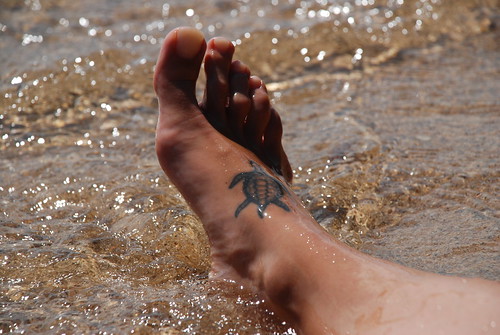
In
Invention Pathways Pty Ltd [2010] APO 10 (21 July 2010) we saw a Delegate of the Australia Patent Office refuse a patent application despite the claims including a data file maintained in data storage means.
A patentable invention requires a physical effect in the sense of a concrete effect or phenomenon or manifestation or transformation.
The physical effect, says the Delegate, must be central to the purpose or operation of the claimed process or otherwise arise from the combination of steps of the method in a substantial way. The physical effect has to be more than peripheral and subordinate to the substance of the claimed invention.
The patent application
Invention Pathways Pty Ltd (the applicant) filed patent application
2009201212 as a divisional application on 27 March 2009.
The patent application was directed to a method for commercialising inventions that includes the step of applying for patent protection. The invention is intended to facilitate the uptake of commercialisation of inventions taking into account the restricted timeframe to file for intellectual property rights and the effect of automatic patent publication. Claim 1 of the patent application read as follows:
1. An invention specific commercialization system to facilitate success of inventions, the system including the steps of:
a) applying for patent protection for the invention in a country which is party to the Paris Convention,
b) conducting a review of specific commercialization process required by the invention,
c) preparing a research and development plan, testing the business dynamics of the invention,
d) conducting prototype testing, developing a prototype cost/benefit analysis,
e) determining product positioning and packaging,
f) conducting a manufacturing checklist,
g) entry of the information collected in steps a) to f) into an electronically fillable checklist having a prescribed time limit for each step to form a commercial entry strategy (CES) with a number of sub-steps, the CES prepared on the basis that each of the sub-steps in the CES are to be completed by a corresponding deadline, all deadlines falling within 30 months from the earliest priority date of the patent application, the checklist being computer-implemented and stored in computer or human readable format in data storage means and associated with processing means to allow updating of the checklist; and
h) policing compliance with the deadlines for the completion of the sub-steps through the production of reminders based on the prescribed time limits in the checklist to ensure that all sub-steps are completed within the deadlines.
The applicant submitted that the ‘electronically fillable checklist’ was to be understood broadly and included, in addition to a specifically programmed software application, many other means by which a checklist could be created electronically. This includes many common text editing, word processing or spreadsheet applications.
Computer related inventions patentable
The Delegate acknowledged that computer related inventions remain patentable in Australia.
The High Court in
National Research Development Corporation v Commissioner of Patents ("NRDC case")
[1959] HCA 67; (1959) 102 CLR 252 (16 December 1959) established a patentability requirement of ‘a mode or manner of achieving an end result which is an artificially created state of affairs of utility in the fields of economic endeavour’.
The
NRDC decision ‘has since been applied in a number of cases that reflect the subsequent evolution of technology, particularly in the application of computers, and innovations in the service industries that have tested the distinction between the useful arts (having industrial or commercial or trading character) and the fine arts’.
The Delegate referred to
CCOM Pty Ltd v Jiejing Pty Ltd [1994] FCA 1168; (1994) 122 ALR 417, (1994) AIPC 91-079 (1994) 51 FCR 260 (22 June 1994) in which apparatus for assembling text in Chinese language characters was held to be patentable.
In
International Business Machines Corporation v Commissioner of Patents [1991] FCA 625; (1992) AIPC 90-853 (1991) 105 ALR 388, (1991) 22 IPR 417 (1991) 33 FCR 218 (13 December 1991) a method and apparatus for producing curves on a computer graphics display was found to be patentable.
In the full Federal Court decision of
Grant v Commissioner of Patents [2006] FCAFC 120 (18 July 2006) the Court observed that ‘the fact that a method may be called a business method does not prevent it being properly the subject of letters patent’, referring to
Welcome Real-Time SA v Catuity Inc [2001] FCA 445 (17 May 2001).
Physical effect
In
Grant the Court found that a method of protecting an asset including steps of establishing a trust, making a gift to the trust, making a loan from the trust and securing the loan was not a manner of manufacture. The Court observed that the method ‘does not produce any artificial state of affairs, in the sense of a concrete, tangible, physical, or observable effect’.
The Court observed that ‘a physical effect in the sense of a concrete effect or phenomenon or manifestation or transformation is required’.
NRDC involved a physical effect as an artificial effect was physically created on the land.
Welcome Real-Time and
CCOM both involved a component that was physically affected or a change in state or information in a part of a machine. In
Welcome Real-Time there was not a physically observable end result in the sense of a tangible product, however the invention involved an application of an inventive method where part of the invention was the application and operation of the method in a physical device.
Coming back to the present case, the Delegate acknowledged the observation in
Welcome Real-Time that a ‘physically observable effect’ was not necessarily required.
United States situation unsettled
The Delegate acknowledged that both
Welcome Real-Time and
Grant referred with approval to the reasoning of the US Courts on the analogous subject matter requirements of
35 USC 101. For example, in
State Street Bank Trust Co v Signature Financial Group Inc [1998] USCAFED 107; 149 F.3d 1368; 47 U.S.P.Q.2d 1596 (23 July 1998) the Court stated that:
‘Today, we hold that the transformation of data, representing discrete dollar amounts, by a machine through a series of mathematical calculations into a final share price, constitutes a practical application of a mathematical algorithm, formula, or calculation, because it produces "a useful, concrete and tangible result" - a final share price momentarily fixed for recording and reporting purposes and even accepted and relied upon by regulatory authorities and in subsequent trades.’
The Delegate noted that ‘the situation in the US has however been unsettled and is the subject of the recent decision of the US Supreme Court in
Bilski v Kappos 561 U. S. ___ (2010) (Case No. 08-964)’.
I am not quite sure what the Delegate means by ‘unsettled’. If he means that US law generally lacks stability or remains unresolved then it would seem odd for the Delegate to go on to adopt the reasoning in
Bilski.
On the other hand, the Delegate may mean that the law prior to
Bilski was settled but has somehow been changed radically by
Bilski. In that case we need to look at the subsequent instability appearing in post-
Bilski cases in the US to assess whether or not the Delegate here was right in relying on
Bilski so heavily.
A substantive effect
The Delegate referred again to
Grant and observed that the Court in that case was considering a claimed business method in which no physical effect could be identified. It is in this context, said the Delegate, that the Court imposed the requirement of ‘a physical effect in the sense of a concrete effect or phenomenon or manifestation or transformation’.
The Court, in the opinion of the Delegate, was not stating a new principle that ‘equates the requirement of an artificially created state of affairs merely with the identification of some physical effect in the application of the claimed method’.
He went on to comment that the mere operation of a method on or with physical things, or producing changes in physical things, has not been held sufficient for patentability in the past. Something more is required.
He stated that
Grant does not suggest that patentability is merely determined on the presence of a physical effect. The physical effect, said the Delegate, must clearly be an effect of such substance or quality that the method considered as a whole is proper subject matter for a patent.
Insignificant post-solution activity
The Delegate made it clear that in his view insignificant post-solution activity is not an example of a substantive effect.
He noted that the Courts in
Grant and
Welcome Real-Time referenced US law. If it was good enough for them it was good enough for him. He referred to a passage in
Bilski stating that ‘the prohibition against patenting abstract ideas cannot be circumvented by attempting to limit the use of the formula to a “particular technological environment” or adding “insignificant post-solution activity”.’
The inputting, storage or displaying of data, according to the Delegate, are examples of insignificant post-solution activity.
Central to the purpose
The Delegate referred again to
Grant which required a physical effect in the sense of a concrete effect or phenomenon or manifestation or transformation. He considered that the physical effect must be significant both in that it is concrete but also that it is central to the purpose or operation of the claimed process or otherwise arises from the combination of steps of the method in a substantial way.
He considered this would apply to a business scheme implemented in some part by computer. He did not believe that the patentability of such a method can arise solely from the fact that it is implemented in or with the assistance of a computer or utilises some part of a computer or other physical device in an incidental way.
The Delegate found in this case that the physical effect identified was peripheral and subordinate to the substance of the claimed invention which really involves a scheme for the commercialisation of inventions. There was no substantive effect produced through the operation of the computer which holds the ‘electronically fillable checklist’. Such an effect does not arise from a synergistic interaction in the operation of the method on the computer or other physical elements. The collection and presentation of information appeared to have no physical consequence other than would arise in the computer with standard software in normal use.
Further steps
The Delegate held that maintaining information in an editable form and the production of reminders in a machine were merely matters of convenience. They did not result in a substantive effect that can be correctly considered to result in patentable subject matter.
He rejected all claims as failing to claim a manner of manufacture.
Photo courtesy of author Golbenge under Creative Commons licence.
 A Combined Wairarapa Planning Committee recently adopted a proposal to extend Greytown’s Historic Heritage Precinct.
A Combined Wairarapa Planning Committee recently adopted a proposal to extend Greytown’s Historic Heritage Precinct.
![[326/365] Lottery Money](http://farm4.static.flickr.com/3245/3047006771_a9cbf5d2e9.jpg)

